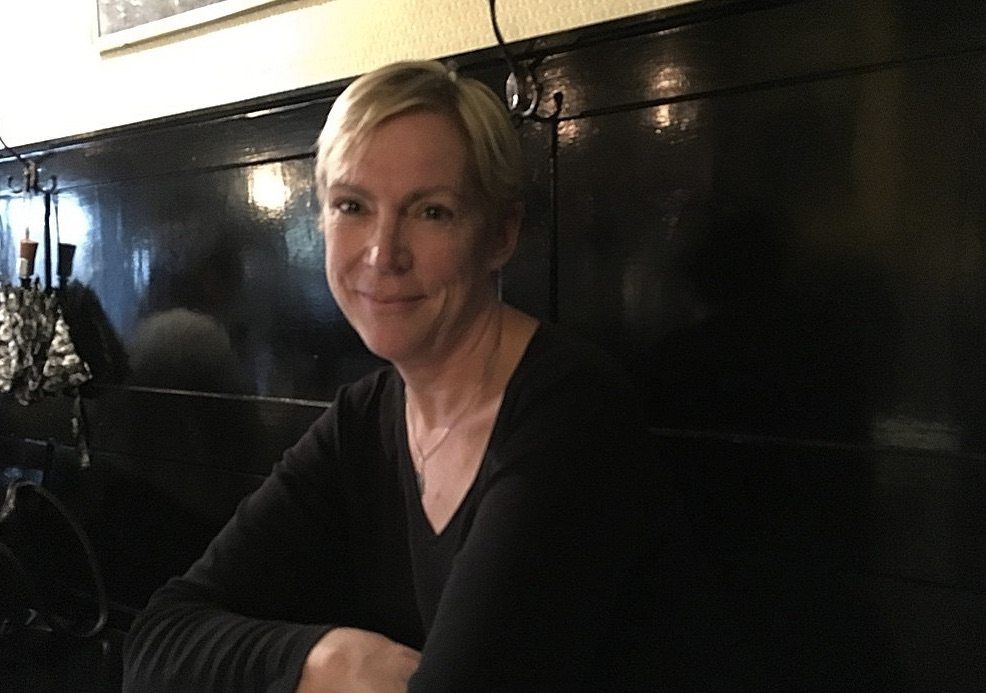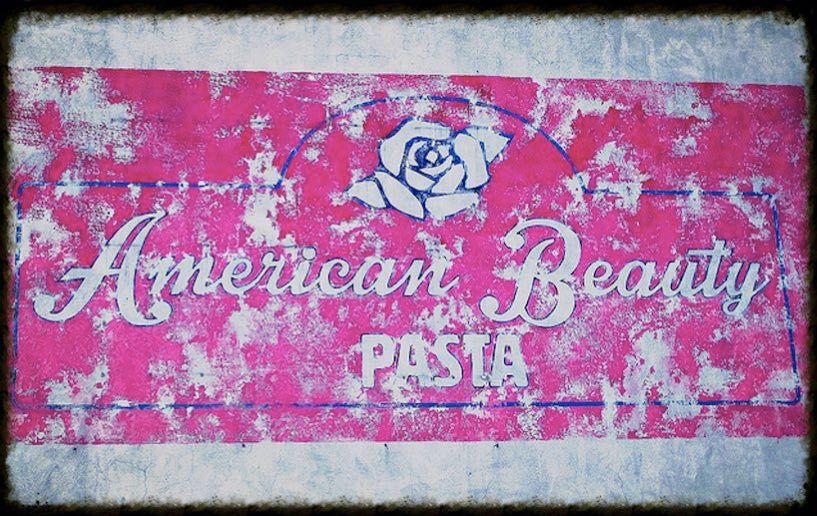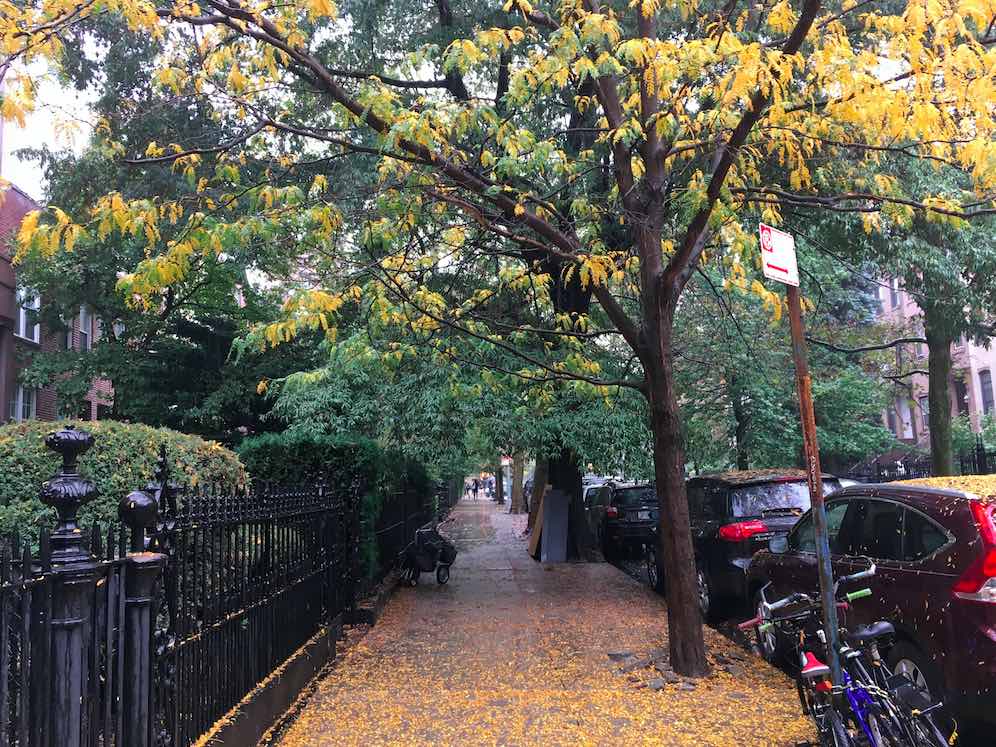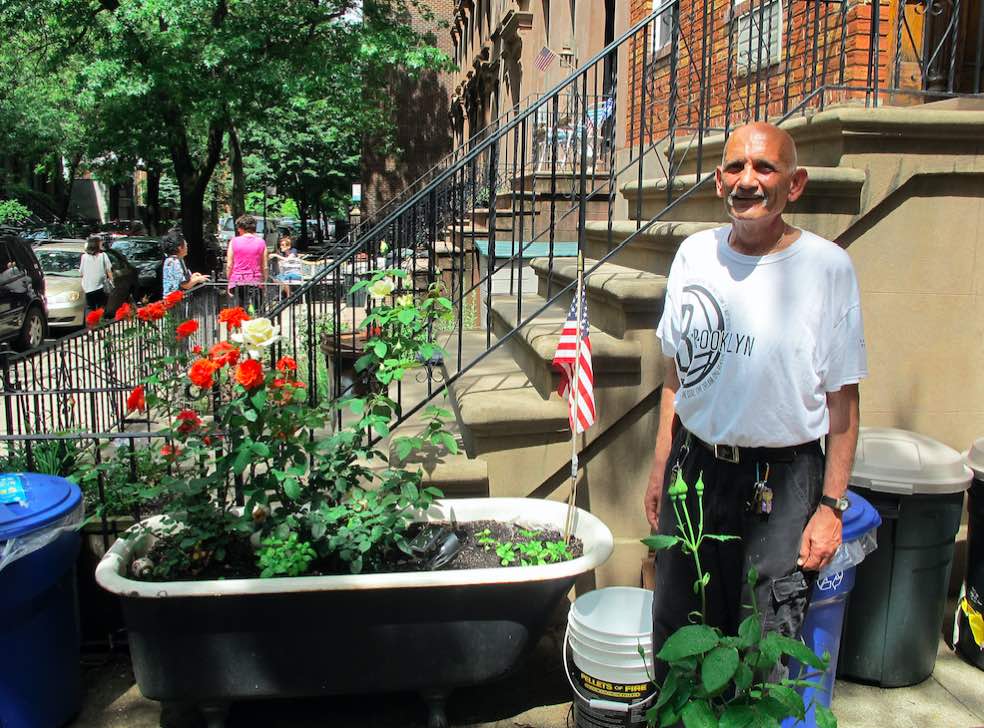An Activist Without Question: On Katia Kelly And Her Blog ‘Pardon Me For Asking’


First, bookmark the blog Pardon Me For Asking.
There’s something rather meta-journalistic about Katia Kelly’s role as the center of this story. After all, when it comes to all things Carroll Gardens and Gowanus, she’s the one usually documenting the goings-on.
Kelly is sitting at Henry’s Local (570 Henry Street at 1st Place) on a very different Henry Street compared to the one that existed 32 years ago when she first moved to Carroll Gardens.
“The neighborhood — all in all — was very quiet and residential. Very Italian,” she says. “It reminded me of Europe. I knew my neighbors and my neighbors’ kids — people were watching out for each other. The changes have come so quickly, so brutally.”
And Kelly understands the depths of those changes. She’s been blogging about the Carroll Gardens and Gowanus neighborhoods for almost a decade.
European Roots
Kelly is originally from a small town in Germany, near Heidelberg. However, she spent much of her childhood living in France after her family relocated to Auvergne — about four hours south of Paris.
“It’s a beautiful, volcanic area,” she says. “And the fact that you know the shopkeepers — there is a sense of continuity. This can be very different than here. New York and continuity don’t go together.”
The Accidental Activist
While Kelly is extremely active and a central resource for local information, it didn’t begin that way.
About a decade ago, she discovered Blogger. “This was pre-Facebook. I came across it and I thought, ‘I can have a website where I can post things and don’t have to pay for it?’,” she says.
Kelly started posting photos and thoughts about the neighborhood. “I was doing it mostly for my friends in Germany and France,” she explains. “I love more than anything else to take pictures in the neighborhood — the good, the beautiful, and the ugly. And it became a way to have a dialogue with the neighborhood.”

But the neighborhood caught on quickly to Kelly’s online documenting.
“Just by the name of the blog [Pardon Me For Asking], it’s clear there was no intent [to make it an activist site]. But it coincided with the neighborhood going under incredible changes.”
Before she knew it, Kelly was getting pictures, emails, and tips from people throughout the area. And the blog started to become something else.
“I would pause in front of stores and think, ‘That’s new. What was there yesterday?’,” says Kelly. “It became my way of dealing with the changes in the neighborhood that were very unsettling.”
News outlets have PMFA on their radar
The New York Times certainly knows about the presence of PMFA. If you research articles about the local debates and topics in Carroll Gardens and Gowanus, Kelly will often come up as a source.
Kelly gave some community perspective in 2014 to the Times in an article concerning the “new roots” of the neighborhood:
As money has flowed into the area, the culture of caring for these gardens has begun to change. Katia Kelly, a 29-year resident who blogs about the area at pardonmeforasking.blogspot.com, said that tending her garden had always been a social event that kept her close to her neighbors. ‘But a new neighbor asked me a couple of years ago who my landscape architect was,’ she said, ‘and my Italian neighbor was really rolling his eyes about that.’
Neighborhood ‘agita’ over the recent development of unusually large buildings like the 85-foot-tall Sackett Union condo and a jarringly out-of-context 11-story building at 100 Luquer Street led to a rezoning of the area in 2009.
“If you stand in one spot long enough, they’ll build on your head.”
Kelly’s knowledge of the neighborhood grew along with the development taking place. Over coffee, she speaks with almost an encyclopedic knowledge of three major developments that have taken place in Carroll Gardens: Karl Fischer’s 100 Luquer (between the Gowanus Expressway and Clinton Street), 340 Court Street (at Union Street), and 360 Smith Street (near 2nd Place).
Kelly quotes Red Hook neighbor Celia Cacace in an article about 340 Court Street: “If you stand in one spot long enough, they’ll build on your head.”

Neighborhood activism runs in Katia Kelly’s family. Her husband, Glenn Kelly, is the chair of the parks Committee of Community Board 6. Both Kellys have been involved in the movement to “downzone” Carroll Gardens so there would be a height limit restriction for development. “The entire neighborhood was up for grabs without it,” she says.
Kelly recalls her experience sitting at a Landmarks Preservation Committee meeting about three years ago.
“What happened was just shocking. The commissioner basically said, after further thought, that Carroll Gardens is already too compromised and there’s really not much worth saving there,” she says. “We don’t have the kind of clout that Park Slope has.”
That polluted canal nearby
“It’s a neighborhood that has a unique personality. I don’t see it as a separate neighborhood … it has a separate identity,” says Kelly of nearby Gowanus. “The problems of Gowanus affect Boerum Hill, Carroll Gardens, and Park Slope.”
With the EPA’s declaration of the Gowanus Canal as a Superfund site, the issues surrounding the clean-up, flood prevention, and neighborhood development are massive.
“I remember when the EPA first showed up,” says Kelly. “With most Superfund sites, they count pollutants in parts-per-billion. With Gowanus, it was parts-per-hundred.”
Kelly sees her attendance at meetings as somewhat of a responsibility. And when it comes to the issue of re-zoning, she is a vocal presence. “I covered all the meetings, I wrote about them because they were taking place during the day. People couldn’t go,” she says. “I took care of collecting testimony.”
She understands why community members feel such frustration with these meetings. “At the beginning, you go to the meetings, but you go once. A lot of people don’t go back a second time because they feel it is an exercise in futility,” she explains. “They feel like it’s a slap in the face. It was a distasteful process.”
According to Kelly, transparency is vital. And she saw the Bridging Gowanus meetings as rather problematic. Her post from June 18, 2016 is titled, “How Shameful! Without Public Announcement, Councilmember Lander ‘Stepping Up’ Gowanus Community Planning Process”:
I found out about Bridging Gowanus‘ next steps by pure coincidence when someone whose organization had been invited by Lander’s office mentioned a meeting on June 16th with the representatives from the NYC Department of City Planning.
Obviously, the person thought he had committed a gaffe, since as soon as the words were spoken, he tried to back paddle and asked me repeatedly, in a strong tone, not to call Brad Lander’s office to find out more.
Frustrated or not, Kelly hasn’t let up on her involvement. She regularly attends meetings — including those of the Gowanus Canal Community Advisory Group — and you can visit her blog to get into the nitty-gritty.

“The Leftovers”
In a recent public hearing concerning the placement of Citi Bike docking stations throughout the CB6 community, some long-time residents — particularly from Carroll Gardens — referred to themselves as “leftovers.”
The term was referenced by residents who don’t believe they have a say anymore in community process.
When we asked Kelly about it, she knew the term well. She dedicated a post to “the leftovers” term on March 18, 2016.
“I originally heard this term only by older residents,” she says. “Most of my neighbors are still Italian, and they said newcomers are calling us ‘the leftovers’. But I’ve never heard of a newcomer saying it. It’s their sentiment of how they are portrayed.”
“How come you’re not gone yet?”
As troubled as Kelly can be about the state of the neighborhood, it’s easy to sense her generosity of spirit, her continued love for the community, and her relentless curiosity about what is happening on every street.
Kelly may speak and write about the development of buildings, but she’s really speaking about the flesh and bones of the individuals that reside inside.
Activism comes naturally for her. “Europeans speak up more. I guess you can say they complain more. They’re much more involved in the political process,” says Kelly. “When I was in high school, I used to go on strike. Ok, I suppose the strikes sometimes coincided with the first day of Spring.”
At one point, the conversation switched to the subject of mail. “I was writing about the amount of mail from realtors who were asking me to sell my house,” she says. “It’s this idea that they want me gone because I’m standing in the way of someone who wants to make money on my house.”
“It seems like you receive a mailing everyday. You know what the realtor is really saying? ‘How come you’re not gone yet?”
Kelly doesn’t seem to be going anywhere.
Follow Katia Kelly’s blog regularly at Pardon Me For Asking.




